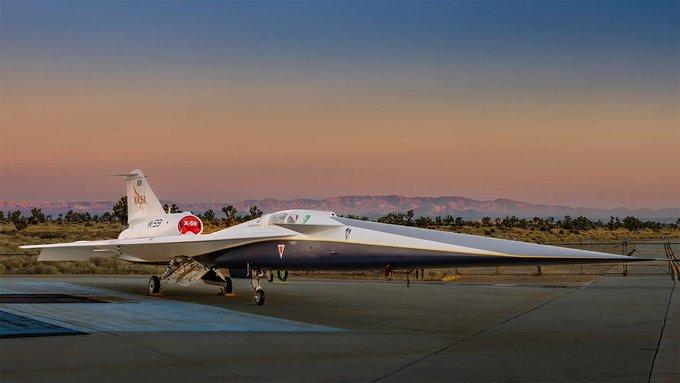US space agency NASA and aerospace major Lockheed Martin have formally debuted X-59 quiet supersonic aircraft, paving the way for a new generation of commercial aircraft that can travel faster than the speed of sound.
The X-59 is at the centre of NASA’s Quesst mission, which focuses on providing data to help regulators reconsider rules that prohibit commercial supersonic flight over land. For 50 years, the US and other nations have prohibited such flights because of the disturbance caused by loud, startling sonic booms on the communities below.
The X-59 is expected to fly at 1.4 times the speed of sound, or 925 mph. Its design, shaping and technologies will allow the aircraft to achieve these speeds while generating a quieter sonic thump, NASA said in a statement late on Friday.
“This is a major accomplishment made possible only through the hard work and ingenuity from NASA and the entire X-59 team,” said NASA Deputy Administrator Pam Melroy.
“In just a few short years we’ve gone from an ambitious concept to reality. NASA’s X-59 will help change the way we travel, bringing us closer together in much less time,” he added.

The aircraft is set to take off for the first time later this year, followed by its first quiet supersonic flight. The Quesst team will conduct several of the aircraft’s flight tests before transferring it to NASA’s Armstrong Flight Research Center in Edwards, California, which will serve as its base of operations.
Once NASA completes flight tests, the agency will fly the aircraft over several to-be-selected cities across the US, collecting input about the sound the X-59 generates and how people perceive it.
“Across both teams, talented, dedicated, and passionate scientists, engineers, and production artisans have collaborated to develop and produce this aircraft,” said John Clark, vice president and general manager at Lockheed Martin Skunk Works.
At 99.7 feet long and 29.5 feet wide, the aircraft’s shape and the technological advancements it houses will make quiet supersonic flight possible. The X-59’s thin, tapered nose accounts for almost a third of its length and will break up the shock waves that would ordinarily result in a supersonic aircraft causing a sonic boom.
Due to this configuration, the cockpit is located almost halfway down the length of the aircraft – and does not have a forward-facing window. The team designed the aircraft with its engine mounted on top and gave it a smooth underside to help keep shockwaves from merging behind the aircraft and causing a sonic boom.
(With inputs from IANS)







